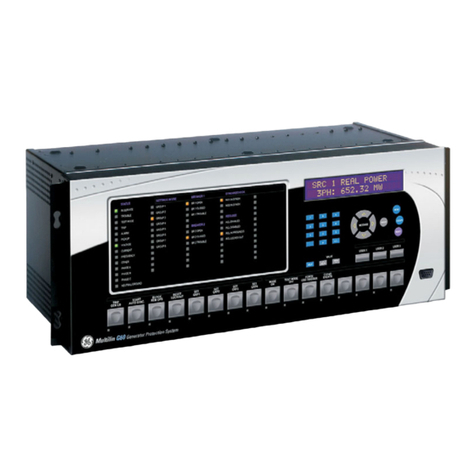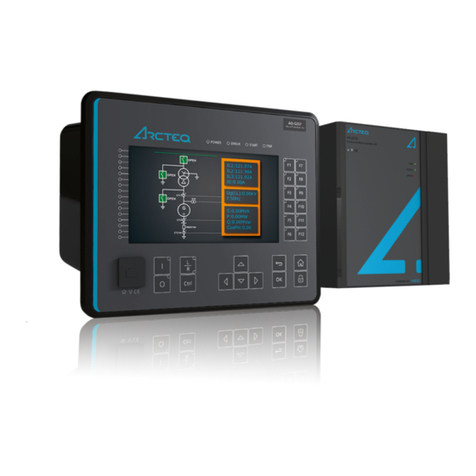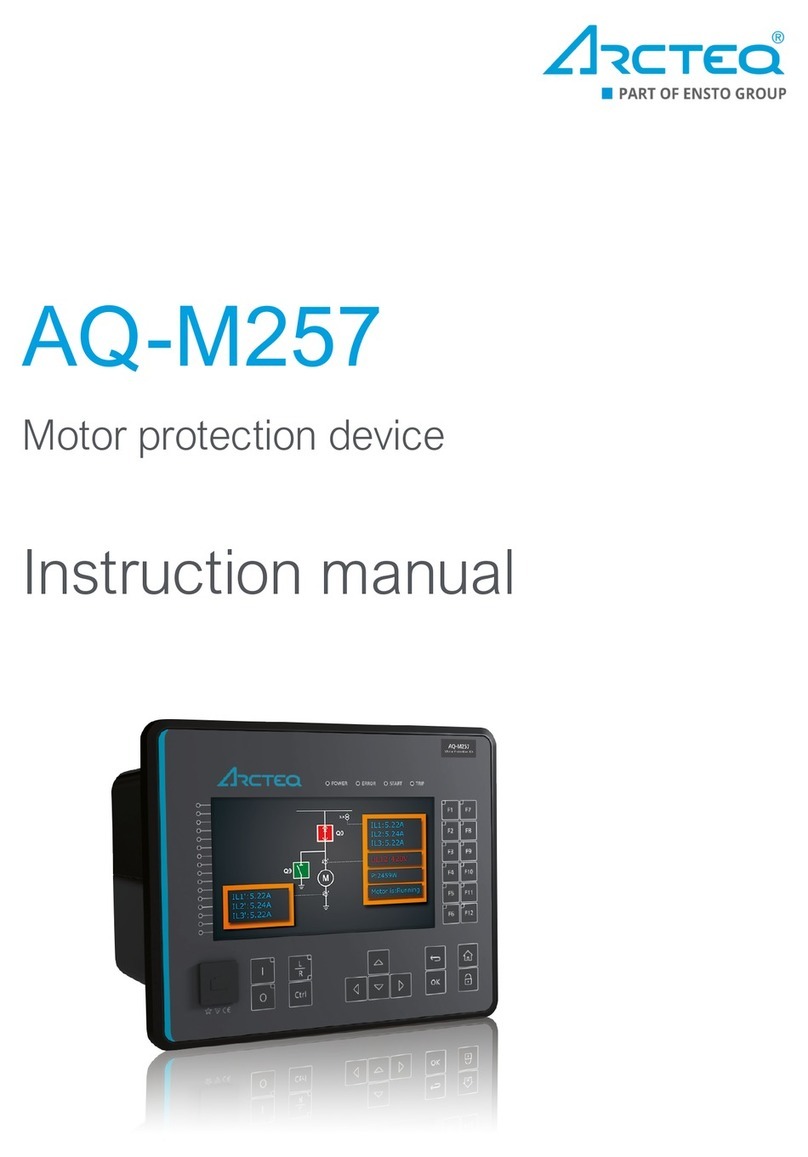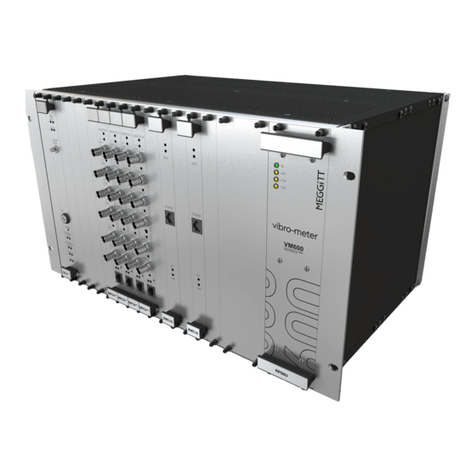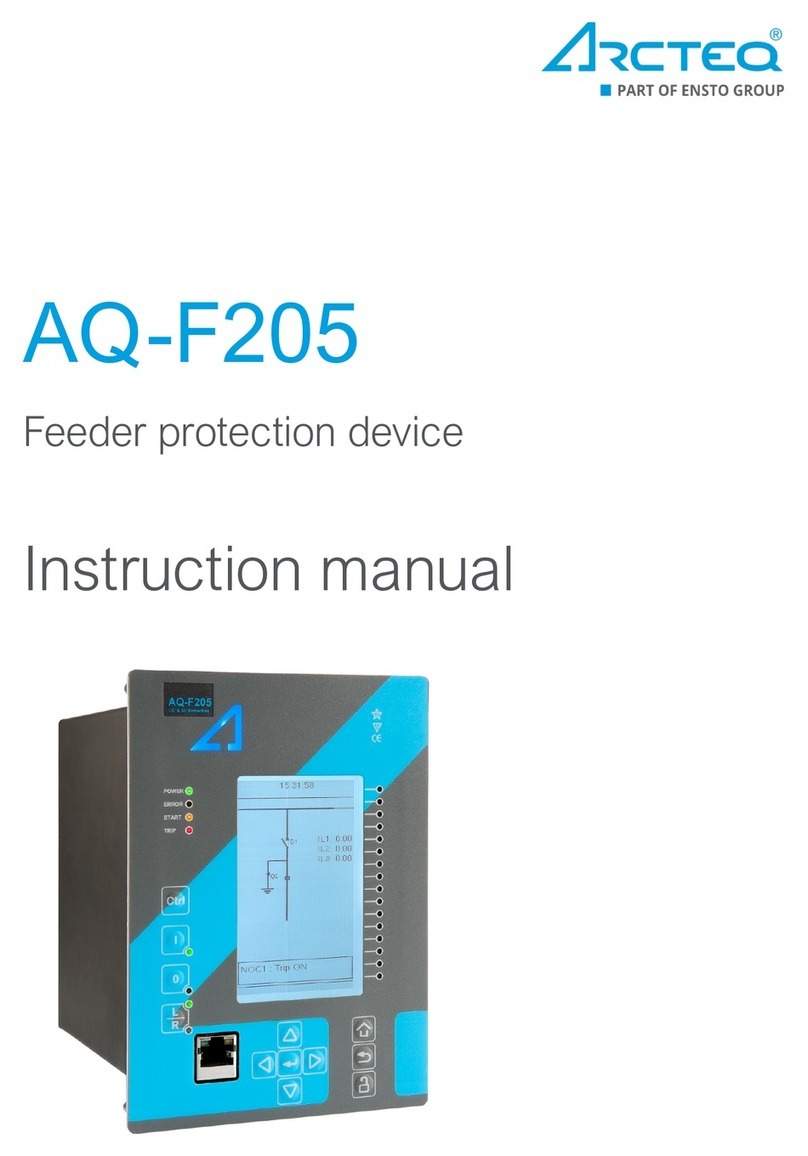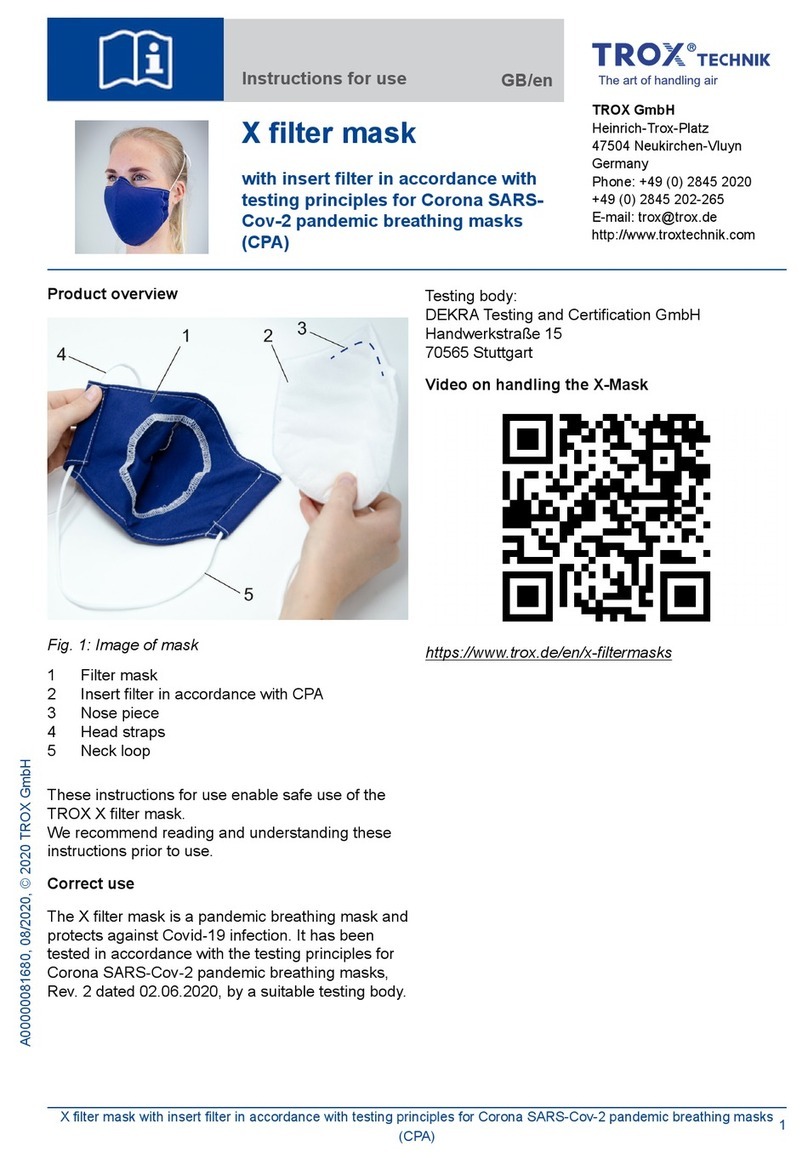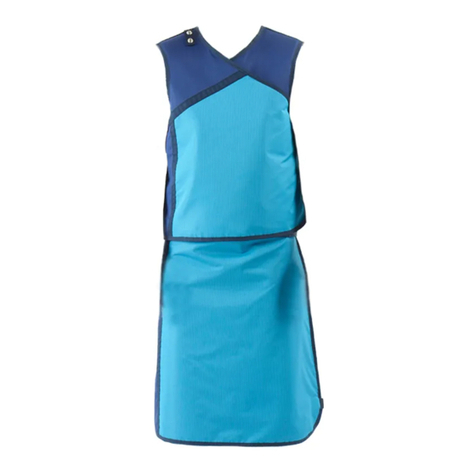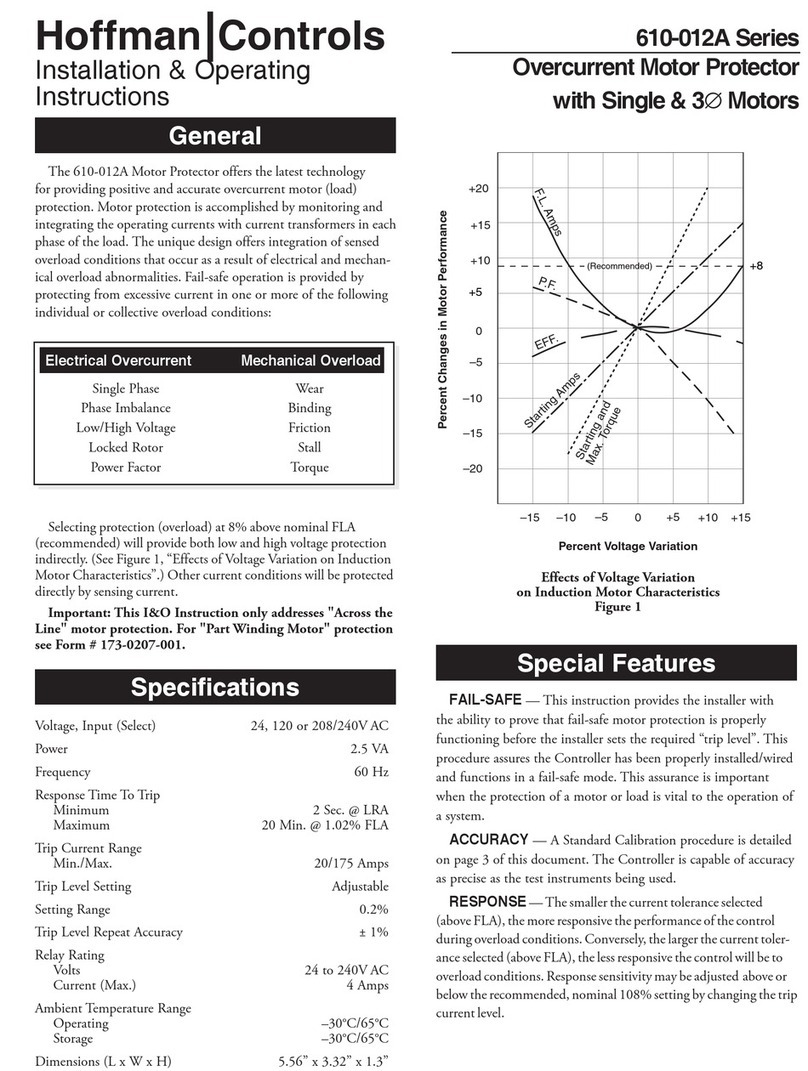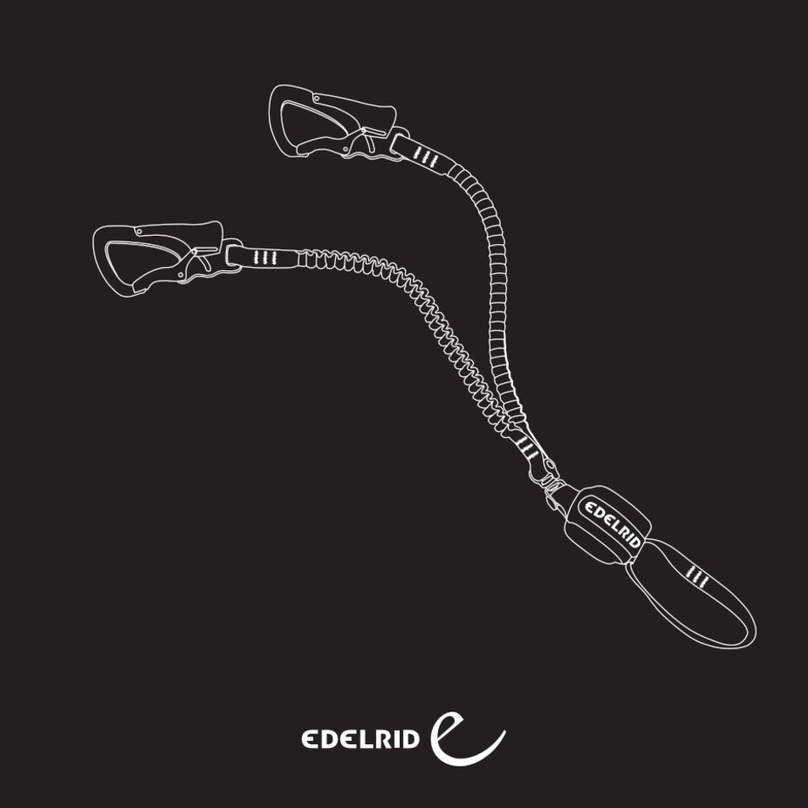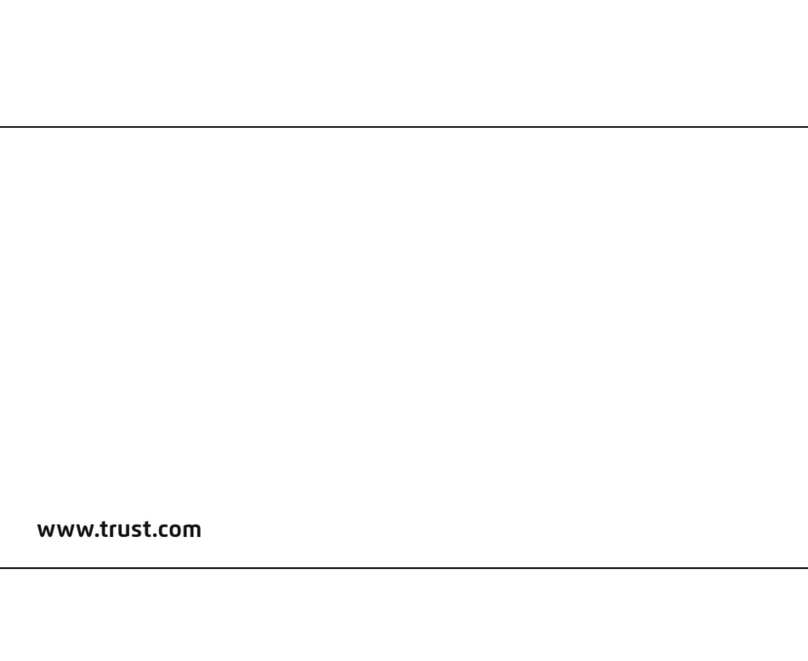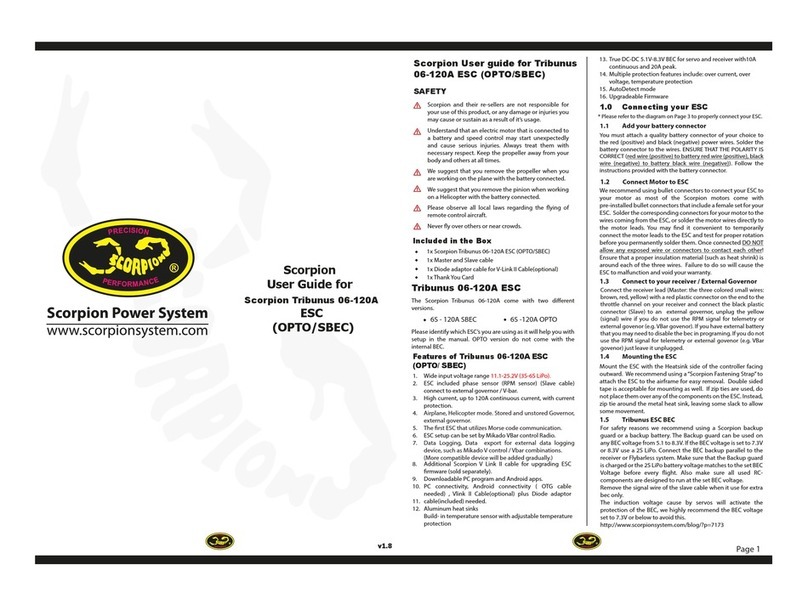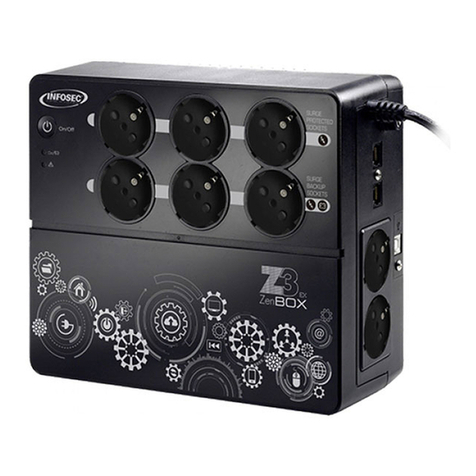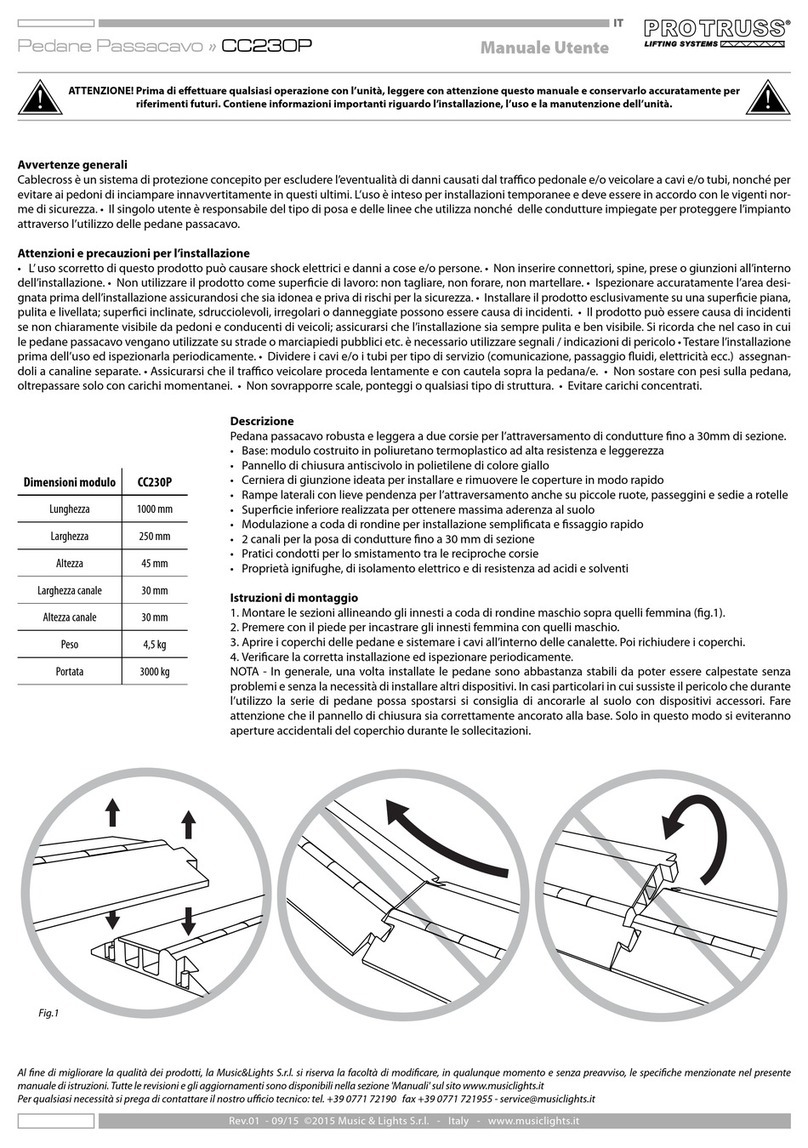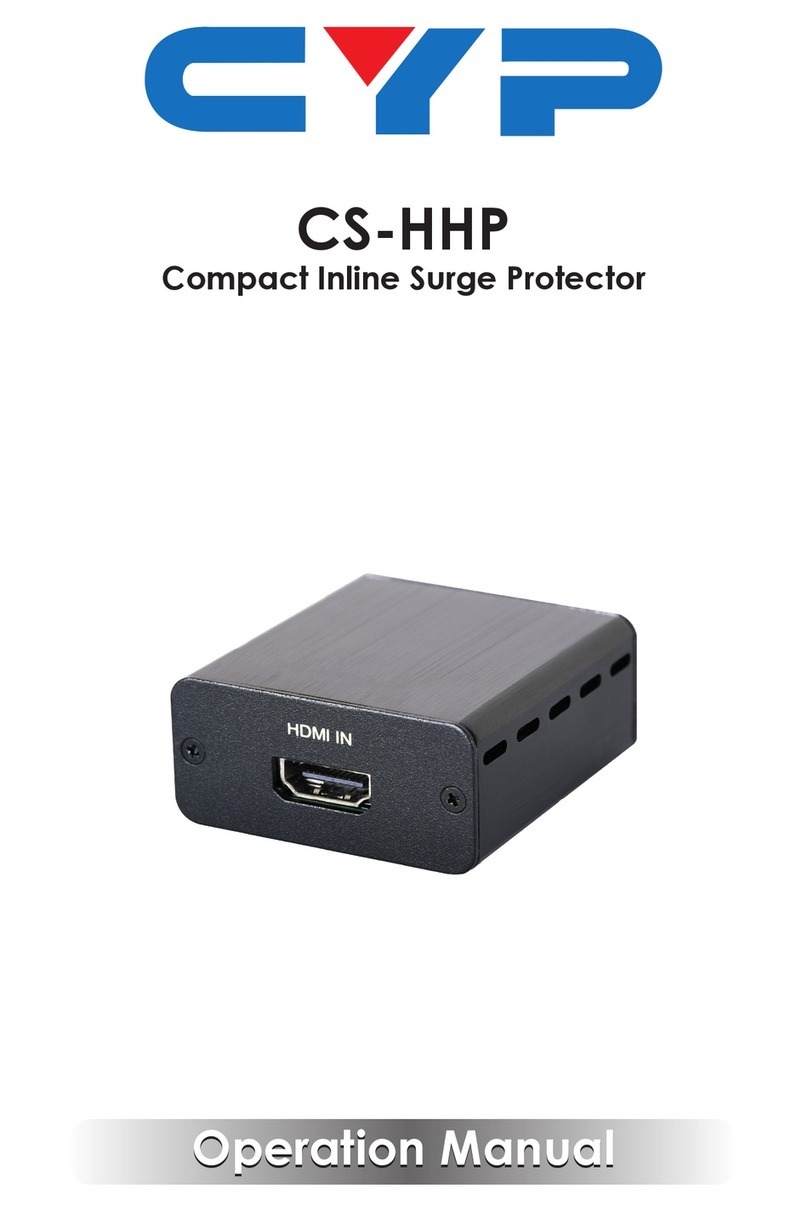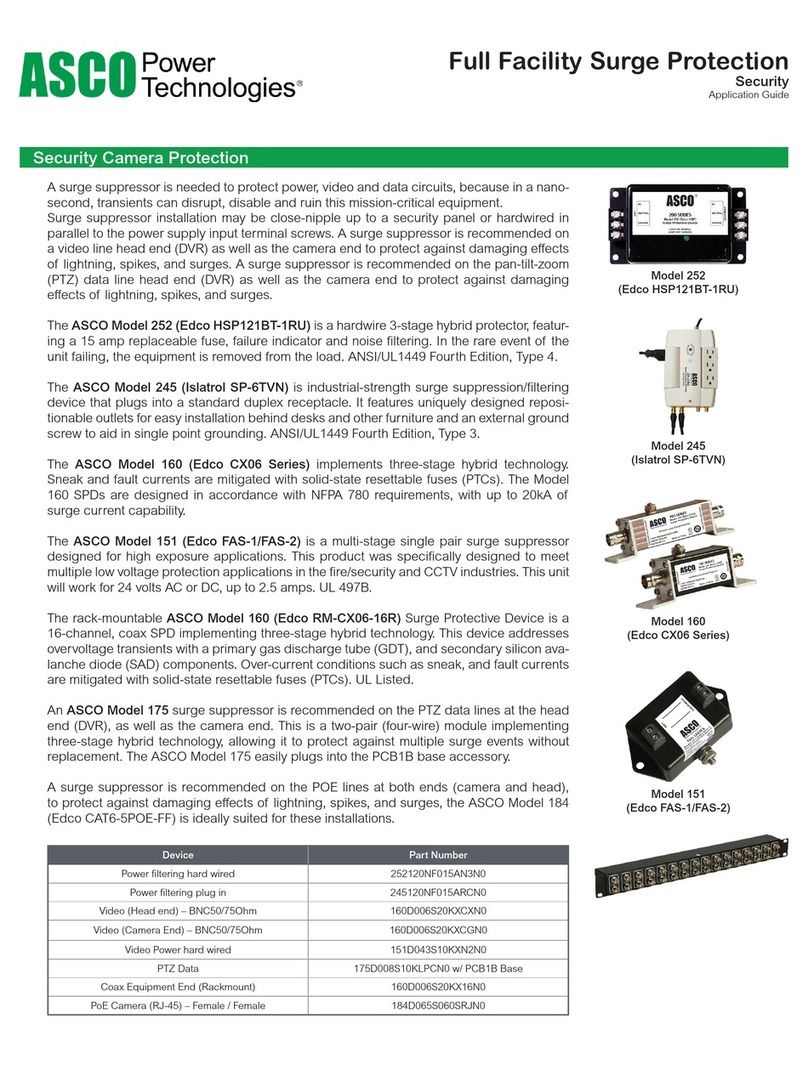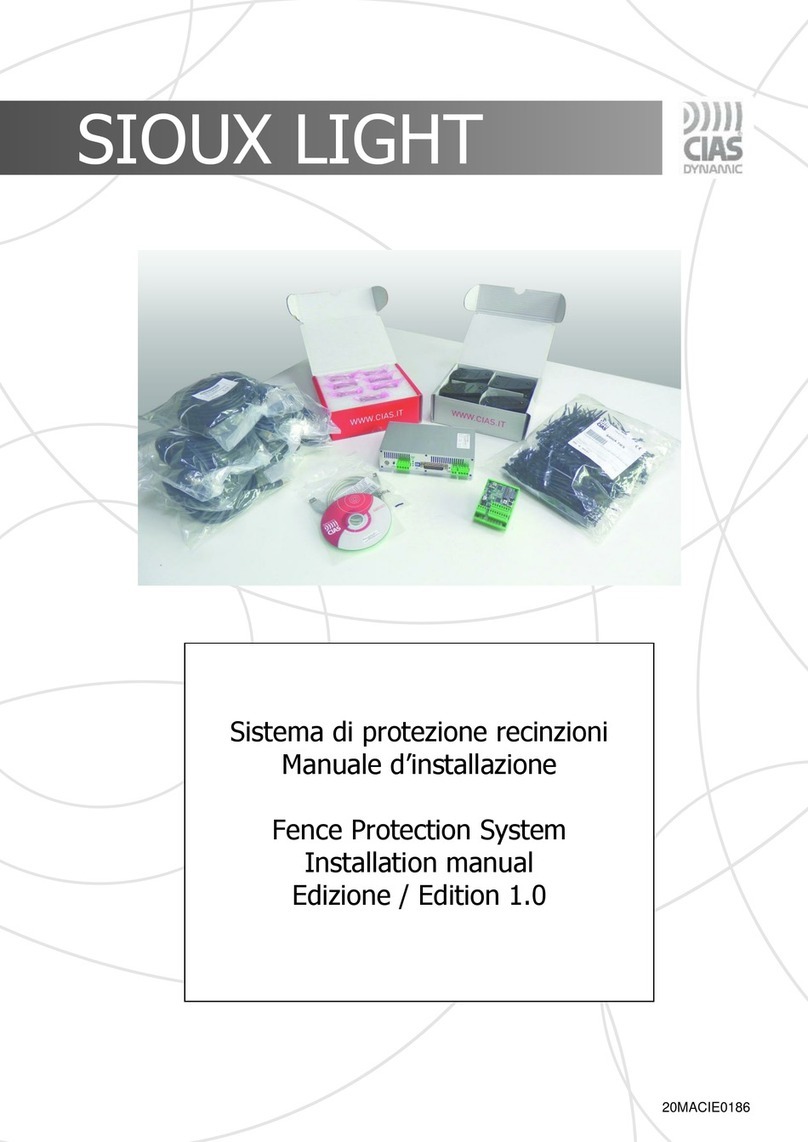FireFlex TOTALPAC N2 Installation guide

FM-076E-0-11B
Advanced Integrated Fire Protection System
Owner's Operation
and
Maintenance Manual
DOUBLE INTERLOCK PREACTION SYSTEM
FIRECYCLE ® III RELEASE
AND
CORROSION INHIBITING SYSTEM

Page ii FIRECYCLE ® III
Integrated Fire Protection System
OWNER'S OPERATION & MAINTENANCE MANUAL
FM-076E-0-11B
Copyright © 2023 FIREFLEX Systems Inc.
All Rights Reserved
Reproduction or use of any portion of this manual without express written permission from FIREFLEX Systems Inc. is prohibited.
While all reasonable efforts have been taken in the preparation of this manual to assure its accuracy, FIREFLEX Systems Inc.
assumes no liability resulting from any errors or omissions in this manual, or from the use of the information contained herein.
TOTALPAC ® is a registered trademark of FIREFLEX Systems Inc.
FIREFLEX Systems Inc. reserves the right to make changes to this manual and the data sheets herewith at any time, without prior
notification.

FIRECYCLE ® III Page iii
Integrated Fire Protection System
OWNER'S OPERATION & MAINTENANCE MANUAL
FM-076E-0-11B
Table of Contents
Double Interlock Preaction System - FireCycle ® III Release
and Corrosion Inhibiting System
General Section .......................................................................................................... Section A
1- General description
2- Listings and approvals
3- Applicable standards
4- Environment
5- Features
6- Configuration description
7- System release
Mechanical Section ...................................................................................................................... Section B
1- Installation, operation & maintenance instructions
1.1 Installation
1.2 Preliminary inspection before placing the system in service
1.3 Placing the system in service
1.4 System operation
1.5 Emergency instructions
1.6 Placing the system back in service after operation
1.7 Inspections & tests
1.8 Maintenance
2- Preaction and corrosion inhibiting system trim
2.1 Normal condition
Trim Options ................................................................................................................................. Section C
1- Shut-off valve & sight glass
2- Semi and full flanged option
3- Anti-column device option
4- ECS ® SMART Protector gas analyzer
5- ECS ® in-line corrosion detector
Air Supply ..................................................................................................................................... Section D
1- Cabinet air supplies
2- Operation
3- Maintenance and inspection
4- Air supply options

Page iv FIRECYCLE ® III
Integrated Fire Protection System
OWNER'S OPERATION & MAINTENANCE MANUAL
FM-076E-0-11B
Control Section ............................................................................................................................ Section E
1- Self-contained unit with release control panel
1.1 Product description
1.2 Self-contained unit with Viking VFR-400 release control panel
1.3 Technical data
1.4 Visual Indicators
1.5 Control buttons
1.6 Time and date settings
2- Remotely controlled unit without release control panel
2.1 Product description
2.2 Technical data
3- N2 ECS ® nitrogen generation control panel
3.1 Product description
3.2 Technical data
3.3 N2 ECS ® controls
3.4 PSV-D SMART vent assembly
Electrical Section .......................................................................................................................... Section F
1- Self-contained configurations
2- Optional modules
3- Remotely controlled configuration
Dimensional Data & Cabinet ....................................................................................................... Section G
1- Cabinet unit
Limited Warranty .......................................................................................................................... Section H

FIRECYCLE ® III Page 1 of 4
Integrated Fire Protection System A
General Section - Double Interlock Preaction System - FIRECYCLE ® III Release
FM-076E-0-24B
1- General description
This TOTALPAC ® N2 FIRECYCLE ® III integrated fire
protection system by FIREFLEX Systems Inc. consists of a
cycling preaction system trim totally pre-assembled, pre-
wired and factory tested, combined with a nitrogen
generator. All electrical and mechanical components of
the system are contained in one single unit.
The nitrogen generator is an ECS ® PGEN-5 FF system,
manufactured by Engineered Corrosion Solutions.
The only connections required for installation are the water
supply inlet, the water discharge outlet, the main drain, the
FIRECYCLE ® detection network, the electrical trouble,
supervisory and alarm connections, as well as the AC
power lines for the release control panel, ECS ®
PGEN-5 FF system and optional air compressor. The
discharge outlet is connected to a fixed piping network of
automatic sprinklers. Water is the extinguishing agent.
On system piping network, closed heat sensitive automatic
sprinklers are spaced and located in accordance with
recognized installation standards in order to detect a fire.
Only those sprinklers immediately over or near to fire
operate, minimizing water damage.
Double interlock preaction system with FIRECYCLE ® III
release uses closed automatic sprinklers on the system
piping network, which is supervised with air pressure. The
FIRECYCLE ® rate compensated temperature detector on
detection network is installed in parallel with the system
piping network and is designed to operate before a
sprinkler head fuses. Detection system operates first and
gives an alarm signal.
Double interlock preaction system is designed so the flow
control valve will open when both detector on the detection
network activates and a loss of pressure in the system
piping network occurs. When the flow control valve opens,
water will flow into the system piping network and out of
any open automatic sprinklers and any other opening on
the system.
The TOTALPAC ®3 FIRECYCLE ® III preaction system allows
the discharge cycle to stop after a preset delay when all
FIRECYCLE ® detectors had returned to their normal
condition.
Under normal supervisory condition, a loss of pressure
alone in the system piping network will only give a
supervisory signal.
Note: Every TOTALPAC ® N2 FIRECYCLE ® III unit is identified
with its unique serial number. This number is located on
an adhesive label inside the main door panel and is used
to maintain a record in our computerized data base. Have
this serial number handy when calling for information on
your unit (format is TN####).
2- Listings and approvals
In addition to being fabricated and tested under tight
ISO-9001 manufacturing and quality control procedures,
your TOTALPAC ® N2 FIRECYCLE ® III unit uses UL/ULC
and/or FM approved components.
WARNING Any unauthorized modification or addition made
on-site to a factory built unit may void the unit's warranty.
Consult your nearest FIREFLEX Systems authorized
distributor before proceeding with such modifications or
additions.
3- Applicable standards
The TOTALPAC ® N2 FIRECYCLE ® III complies with the
following standards:
- NFPA-13 Sprinkler Systems
- NFPA-15 Water Spray Fixed Systems
- NFPA-72 Fire Alarm Systems
Before installation, the contractor installing the unit shall
also be familiar with the following documents and
standards:
- Applicable Local & State Building Codes
- Any additional requirements of the Local Authority Having
Jurisdiction
4- Environment
TOTALPAC ® N2 FIRECYCLE ® III unit shall be installed in a
dry and clean location. Verify that all equipment is properly
heated and protected to prevent freezing and physical
damage. Refer to section E CONTROLS for environment
data.
The unit and its components must be kept free of foreign
matter, freezing conditions, corrosive atmospheres,
contaminated water supplies, and any condition that could
impair its operation or damage the components.
The frequency of the inspections and maintenance will
vary depending on these environmental conditions as well
as the condition of the air supply to the system. The owner
is responsible for maintaining the fire protection system
and devices in proper operating condition. Refer to
section B MECHANICAL for maintenance instructions.

Page 2 of 4 FIRECYCLE ® III
A
Integrated Fire Protection System
General Section - Double Interlock Preaction System - FIRECYCLE ® III Release
FM-076E-0-24B
5- Features
5.1 General features
The TOTALPAC ® N2 FIRECYCLE ® III unit manufactured by
FIREFLEX Systems Inc. which has developed and
introduced the concept of integrated fire protection
systems.
Main features are:
Trouble free design for safe and easy application
Available in 4 sizes from 2" (50 mm) to 6" (150 mm)
diameter
Uses Engineered Corrosion Solutions ® PGEN-5 FF, the
best value in nitrogen generation technology
Limits the liability of early pipe replacement
Significant cost savings by using black pipe in
combination with nitrogen
Uses the Viking flow control valve
Compact, aesthetic and easy to move
User-friendly standardized owner's manual with every
unit
Unique serial number on every unit
Uses only c-UL-us Listed and FM Approved components
Designed in accordance with NFPA Standards
Trim is fully assembled and tested at the factory
All trims are galvanized steel, Listed and Approved for
250 PSI (1724 kPa) service maximum
Quick connections to water supply and drain on both
sides, and sprinkler riser on top of unit, all available with
grooved end or flanged fittings
No open drain cup inside unit
Sturdy 14 gauge steel cabinet, painted fire red with oven
baked polyester powder on phosphate base
Textured rust proof finish
Neoprene gasket on all doors to eliminate vibrations
Separate unlocked access hatch to emergency manual
release
Key-alike locks on all cabinet doors
Manufactured under ISO-9001 quality control procedures
5.2 ECS® PGEN-5 FF nitrogen generator features
Handles up to 950 gallons (3596 litres) of nitrogen for
sprinkler piping capacity
Initial sprinkler piping capacity lower than 250 gallons
(946 litres) only requires the ECS ® PGEN-5 FF
compressor
Fully automatic with pressure monitoring
Pre-filters and pressure regulator
Control panel with gauges, hour meter and power, fast fill
and vent switches
6- Configuration description
TOTALPAC ® N2 FIRECYCLE ® III preaction system is built
around the Viking trim using straight through flow control
valve model J-1 (model J-2 is the Halar® coated version
for use in corrosive environments).
The valve is rated up to a maximum of 250 PSI WWP
(1724 kPa) and is available in the following diameters:
2" (50 mm) 4" (100 mm)
3" (80 mm) 6" (150 mm)
TOTALPAC ® N2 SUREFIRE ® preaction system is supplied
with groove/ groove flow control valve. Unit with
flange/flange flow control valve is also available on
request.
6.1 Double interlock preaction system
The system piping network is pressurized with air or
nitrogen gas. The preaction system uses the Viking flow
control valve which opens when both a FIRECYCLE ®
detector from the detection network activates and a loss of
pressure in the system piping network occurs, or anytime
the handle of the emergency release valve is pulled.
If a FIRECYCLE ® detector on the detection network
activates due to fire or malfunction, the flow control valve
will not open.
If the system piping network is broken or an automatic
sprinkler fuses, the flow control valve will not open.
6.2 ECS® PGEN-5 FF nitrogen generator
Engineered Corrosion Solutions utilizes membrane
technology in the ECS ® PGEN-5 FF corrosion inhibiting
systems in order to efficiently separate nitrogen molecules
from the air we breathe. Membrane technology has a
simple air flow design, and is easy to service.
The ECS ® PGEN-5 FF system provide an economical,
precise means of generating high purity nitrogen. Since air
is comprised of ~79% N2, we simply and cost-effectively
separate the N2 from the air. Nitrogen is an inert gas (non-
combustible) and widely used in thousands of industries
along with fire protection systems. The N2 is “generated”
by means of the air compressor pushing air into the simple,
safe membrane element, which in turn mechanically
separates N2 molecules from other molecules found within
air.
The ECS ® PGEN-5 FF nitrogen generation system
effectively inhibits electrochemical, galvanic and
microbiologically influenced corrosion (MIC), as well as
freeze-ups and ice plugs. The ECS ® PGEN-5 FF
corrosion inhibiting system produces 98% or higher pure
nitrogen on demand and introduces it to the preaction
piping network. In doing so, oxygen and moisture are
displaced from the piping through the ECS ® PSV-D
SMART vent system.

FIRECYCLE ® III Page 3 of 4
Integrated Fire Protection System A
General Section - Double Interlock Preaction System - FIRECYCLE ® III Release
FM-076E-0-24B
6.3 ECS ® PSV-D SMART vent
High purity Nitrogen must be equally distributed throughout
the entire sprinkler piping system in order to effectively
inhibit corrosion. The patented ECS ® PSV-D SMART vent
provides a low volume, constant purge of nitrogen within
sprinkler piping. The rate in which gas is evacuated from
the sprinkler piping is within NFPA guidelines and allows
breathing to occur. The ECS ® PSV-D SMART vent also
assists in drying out the residual water from a hydrostatic
test. Computational fluid dynamics modeling proves that
this is the most effective way to ensure that high purity
nitrogen reaches all branches within the sprinkler piping.
The ECS ® PSV-D SMART vent is installed within the
TOTALPAC ® N2 cabinet.
6.4 ECS ® Leak monitor alarm
Minor leaks cause the ECS ® PGEN-5 FF air compressor
to run excessively in order to maintain supervisory
pressure. The nitrogen generator and air compressor are
designed to run up to two (2) hours at a time when filling
the system to specified pressure of high purity nitrogen. If
the ECS ® PGEN-5 FF air compressor is running greater
than four (4) hours, the TOTALPAC ® N2 system activates an
audible alarm and transmit a supervisory signal to the
monitoring alarm panel. Corrective procedures must be
taken to resolve the leaks.
7- System release
7.1 FIRECYCLE ® III release
Preaction system with FIRECYCLE ® III release requires an
electric detection network equipped with FIRECYCLE ®
detectors. Release trim for the flow control valve requires
a normally closed solenoid valve controlled by an approved
releasing control panel (if provided with this system, see
section E CONTROLS and VFR-400 manual for details).
The release control panel is configured for crossed zones
operation. A first zone is connected to the detection
network; the other one is connected to a pressure switch
used for low air alarm signal.
In fire condition, both the activation of a FIRECYCLE ®
detector on the detection network and the fusing of an
automatic sprinkler from the system piping network are
required to energize the solenoid valve, causing the flow
control valve to open. Water will flow from the preaction
system through opened sprinklers. Automatic sprinkler
must open to allow water to flow from the preaction
system.
The fire status is sensed by the FIRECYCLE ® detectors.
When both FIRECYCLE ® detectors had returned to their
normal state, a soak timer cycle starts. At the end of the
soak timer, if the detection condition is still normal, the
normally closed solenoid valve is de-energized, causing
the flow control valve to close, allowing the water flow to
stop automatically.
Should the fire rekindle, FIRECYCLE ® detectors will be
reactivated, and the discharge sequence will be initiated
again. This feature - unique to the TOTALPAC ® N2
FIRECYCLE ® III preaction system - will repeat as long as
power is available to the releasing control panel, helping to
minimize water usage or damage, and reduce the danger
of pollution to surrounding areas.

Page 4 of 4 FIRECYCLE ® III
A
Integrated Fire Protection System
General Section - Double Interlock Preaction System - FIRECYCLE ® III Release
FM-076E-0-24B
This page is left intentionally blank.

FIRECYCLE®III Page 1 of 12
Integrated Fire Protection System
B
Mechanical Section - Double Interlock Preaction System - FIRECYCLE®III Release
FM-076E-0-37A
1- Installation, operation & maintenance
instructions
Note: Numbers indicated between brackets refer to figure 4
DETAILED SYSTEM TRIM SCHEMATICS from this section and
section DAIR SUPPLY.
1.1 Installation
1. Conform to local municipal or other codes regarding
installations of fire protection systems.
2. Install the TOTALPAC ®N2FIRECYCLE®III unit and
connect the system according to instruction manual and
technical data supplied.
IMPORTANT ! The cabinet must be firmly anchored to the
floor using all four (4) anchoring holes (see section G
CABINET).
Note: The drain collector shall be connected to an open
drain. Do not restrict or reduce drain piping.
3. Install the system piping network in accordance with
applicable standards.
4. Connect supervisory and alarm signals according to
electrical schematics and if applicable, all FIRECYCLE®
detection and signaling circuits (see section F
ELECTRICAL).
5. Connect the AC power to the ECS®PGEN-5 FF
corrosion inhibiting system on its own breaker in the
electric distribution panel. If applicable, connect the AC
power to the release control panel on a separate
breaker in the electric distribution panel (see section F
ELECTRICAL).
Notes:
AC power connections must be made by a qualified
installer according to national standards and equipment
specifications.
Do not apply AC power to the equipment yet.
6. Perform preliminary inspection prior to put system in
service (see paragraph 1.2 of the current section).
7. Place the system in service (see paragraph 1.3 of the
current section).
8. Perform the annual inspection sequence (see
paragraph 1.8 of the current section) and test each
detection device and alarm unit.
9. If the system does not operate as it should, make the
necessary corrections according to manuals issued or
consult your distributor or FIREFLEX Systems Inc.
10. Make sure that building owner or a delegated
representative has received instructions regarding the
operation of the system.
WARNING ! TOTALPAC ®N2FIRECYCLE®III unit must be
installed in an area not subject to freezing temperatures or
physical damage.
1.2 Preliminary inspection before placing the system in
service
1. Open door to mechanical section.
a) Main water supply valve (D1) must be CLOSED.
b) Priming valve (B1) must be CLOSED.
c) Air supply for system piping network must be CLOSED
(see section DAIR SUPPLY).
d) Flow test valve (B6) and main drain valve (D3) must
be CLOSED.
e) Alarm test valve (B5) must be CLOSED.
f) Gauges (B11, B12 and E3) should show 0 PSI
(0 kPa).
g) If applicable, the shut-off valve (D4) must be OPEN.
2. OPEN the manual emergency release valve (B10) and
make sure the flow control valve (A1) is tripped.
3. Using the built-in contractor's hydrostatic test ports (see
figure 3 of this section and section DAIR SUPPLY), fill
system piping network with water and maintain pressure
as per NFPA-13 requirements.
WARNING ! Do not subject the pressure gauges and
pressure transducers to hydrostatic pressure above
250 PSI (1724 kPA). CLOSE gauge valves before
proceeding with hydrostatic test.
Note : Do not expose the ECS®PSV-D SMART vent
assembly to hydrostatic test. CLOSE the isolation valve
prior to hydrostatic test (see section ECONTROLS). OPEN
the valve once hydrostatic test is completed.
4. Correct leaks if any before completing test.
5. Verify that main water supply valve (D1) is still CLOSED.
6. OPEN main drain valve (D3) to completely drain the
system piping network.
7. Apply AC power to the ECS®PGEN-5 FF system. If
applicable, apply AC power to the release control panel.
The air supply must be CLOSED (see section DAIR
SUPPLY).
8. If applicable, connect the batteries to the release control
panel. Observe battery size and polarity.
For battery capacity calculations, see the VIKING VFR-400
INSTALLATION, OPERATION AND INSTRUCTION MANUAL
provided with the TOTALPAC ®N2FIRECYCLE®III unit.
Note: Batteries shall be installed with the release control
panel at hanged position. Battery compartment should
always stay closed while rotating the release control panel.
9. If applicable, reset the release control panel and silence
the alarms (see section ECONTROLS).

Page 2 of 12 FIRECYCLE®III
B
Integrated Fire Protection System
Mechanical Section - Double Interlock Preaction System - FIRECYCLE®III Release
FM-076E-0-37A
1.3 Placing the system in service
1. Verify that the main water supply valve (D1) is CLOSED.
Verify that the system has been properly drained.
2. Verify that all automatic sprinklers are set and that
inspector's test valves and/or piping auxiliary drain
valves are CLOSED.
3. CLOSE main drain valve (D3). Verify that the manual
emergency release valve (B10) is CLOSED.
4. Air supply must be OPEN (see section DAIR SUPPLY).
5. Establish recommended supervisory pressure to the
system piping network (see paragraph 2.1 NORMAL
CONDITION of the current section and section DAIR
SUPPLY).
6. Maintain air supply (see section DAIR SUPPLY).
Nitrogen generator will come on for nitrogen generation.
7. OPEN priming valve (B1). Verify that the pressure
indicated at the priming pressure gauge (B11) is equal
to, or greater than the pressure indicated at the water
supply pressure gauge (B12).
8. If applicable, reset the release control panel (see
section ECONTROLS). Solenoid valve (F1) should
CLOSE.
9. OPEN flow test valve (B6).PARTIALLY OPEN main water
supply valve (D1).
10. When full flow develops from the flow test valve (B6),
CLOSE the flow test valve. Verify there is no flow from
drip check valve (B7) when the plunger is pushed.
11. FULLY OPEN the main water supply valve (D1).
12. Verify that the alarm test valve (B5) is CLOSED and that
all other valves are in their "normal" operating position
(see paragraph 2.1 NORMAL CONDITION of the current
section).
13. If applicable, reset the release control panel (see
section ECONTROLS).
14. Check and repair all leaks.
15. On new installation, system that has been placed out of
service, or where new equipment has been installed,
trip test the system to verify that all equipment functions
properly (see paragraph 1.7.2 FULL FLOW TRIP TEST of
the current section).
16. Notify the AUTHORITY HAVING JURISDICTION, remote
station alarm monitors, and those in the affected area
that the system is in service.
Note: When a valve has been removed from service and is
subject to freezing or will be out of service for an extended
period of time, all water must be removed from the priming
chamber, trim piping, water supply piping and any other
trapped areas.
1.4 System Operation
System water supply pressure enters the priming chamber
of the flow control valve (A1) through the priming line which
includes a normally open priming valve (B1), strainer (B2),
restricted orifice (B3) and spring loaded check valve (B4).
Water pressure is trapped in the priming chamber of the
flow control valve (A1) by a spring loaded check
valve (B4), normally closed solenoid valve (F1), normally
open solenoid valve (F2), pneumatic actuator (F3) and
manual emergency release valve (B10). The pressure in
the priming chamber holds the flow control valve clapper
closed, keeping the outlet chamber and system piping dry.
Air pressure from the system piping network is maintained
through the PORV (B9) (pressure operated relief valve).
1.4.2 In a fire condition
When a FIRECYCLE®detector is activated, the release
control panel activates an alarm through a first initiating
circuit. When an automatic sprinkler fuses, a second
initiating circuit is activated through the low air pressure
switch (E4). When both initiating circuits are activated, it
energizes the normally closed solenoid valve (F1) and
normally open solenoid valve (F2).
Pressure from the priming chamber of the flow control
valve (A1) is released to the open drain manifold faster
than it is supplied through the restricted orifice (B3). The
flow control valve clapper opens to allow water to flow into
the piping network and alarm devices, causing water flow
alarms connected to the alarm pressure switch (C1) and
the optional water motor alarm (C2) to activate. The
PORV (B9) is pressurized, purging the air pressure. When
an automatic sprinkler fuses, water will flow from the
system piping network.
Note: If the FIRECYCLE®detection system operates due to
mechanical damage or malfunction, the flow control
valve (A1) will stay closed.
1.4.3 Cycling discharge stop
Water discharges until all FIRECYCLE®detectors have reset
(cooled below their set point). The release control panel
then activates a soak timer, allowing the system to flow
water for a preset period of time (soak timer).
When the soak timer has elapsed, the release control
panel de-energizes the normally closed solenoid
valve (F1), allowing it to close. The normally open
solenoid (F2) remains energized closed. It rebuilds
pressure in the priming chamber of the flow control
valve (A1), allowing it to close and stop discharge.
Should a FIRECYCLE®detector go into alarm, the release
control panel energizes once again the normally closed
solenoid valve (F1), and the entire discharge cycle repeats.

FIRECYCLE®III Page 3 of 12
Integrated Fire Protection System
B
Mechanical Section - Double Interlock Preaction System - FIRECYCLE®III Release
FM-076E-0-37A
1.4.4 Manual operation
Anytime the handle of the manual emergency release
valve (B10) is triggered, pressure is released from the
priming chamber of the flow control valve (A1) causing
flow control valve to open. Water will flow into the system
piping network and alarm devices (C1 and optional C2) will
operate.When an automatic sprinkler fuses, water will
flow from the system piping network.
1.4.5 Supervisory condition
If an automatic sprinkler opens prior the operation of the
detection system or any time the supervisory pressure is
lost in the system piping network, the low air pressure
switch (E4) will give a low air supervisory signal. The
normally open solenoid valve (F2) will be energized, but
the flow control valve (A1) will stay closed.
1.4.6 Fail-safe condition
If the release control panel is not operational or a trouble
condition occurs on initiating zone or normally closed
solenoid valve (F1) and normally open solenoid valve (F2),
the system will operate as a dry pipe system with the help
of the pneumatic actuator (F3).
In case of AC power loss following a cycling discharge
stop, if the main water supply valve (D1) is still open while
the batteries have reached their cycle end, the normally
open solenoid valve (F2) will be de-energized, causing the
flow control valve (A1) to reopen with the help of the
pneumatic actuator (F3).
1.5 Emergency instructions
To take system out of service
WARNING ! Placing a control valve or detection system out
of service may eliminate the fire protection capabilities of
the system. Prior to proceeding, notify all local
AUTHORITIES HAVING JURISDICTION. Consideration should
be given to employ a fire patrol in the affected areas.
After a fire, verify that the fire is OUT and that placing the
system out of service has been authorized by the
appropriate local AUTHORITY HAVING JURISDICTION.
Sprinklers piping that have been subjected to a fire must
be returned to service as soon as possible. The entire
system must be inspected for damage, and repaired or
replaced as necessary.
1. CLOSE main water supply valve (D1).
2. OPEN main drain valve (D3).
3. If applicable, silence audible devices (see section E
CONTROLS).
Note: Electric alarms controlled by a pressure switch
installed at the ¾"-NPT (20mm) connection (C2) for a non-
interruptible alarm signal cannot be shut-off until the flow
control valve (A1) is reset or taken out of service.
4. Air supply must be CLOSED (see section DAIR SUPPLY).
5. OPEN flow test valve (B6).
6. CLOSE priming valve (B1).
7. Replace any detector that have been damaged.
8. Replace any automatic sprinkler that have opened,
been damaged or exposed to fire conditions.
9. Return the system to service as soon as possible (see
paragraph 1.6 PLACING THE SYSTEM BACK IN SERVICE
AFTER OPERATION of the current section).
10. Perform all recommended maintenance procedures
(see paragraph 1.8 MAINTENANCE in the current section).
Note: When a system has been removed from service and
is subject to freezing or will be out of service for an
extended period of time, all water must be removed from
the priming chamber, trim piping, water supply piping and
any other trapped areas.

Page 4 of 12 FIRECYCLE®III
B
Integrated Fire Protection System
Mechanical Section - Double Interlock Preaction System - FIRECYCLE®III Release
FM-076E-0-37A
1.6 Placing the system back in service after operation
1. Verify that the system has been properly drained.
Verify that all automatic sprinklers are set and/or
inspector's test valve and system piping auxiliary drain
valves are CLOSED.
2. Verify that the main water supply valve (D1) is CLOSED,
and that the manual emergency release valve (B10) is
CLOSED.CLOSE main drain valve (D3).
3. Air supply must be OPEN (see section DAIR SUPPLY).
4. Restore supervisory pressure to the system piping
network (see section DAIR SUPPLY).
5. Maintain air supply (see section DAIR SUPPLY).
Nitrogen generator will come on for nitrogen generation.
6. OPEN priming valve (B1). Verify that the pressure
indicated at the priming pressure gauge (B11) is equal
to, or greater than the pressure indicated at the water
supply pressure gauge (B12).
7. If applicable, reset the release control panel (see
section ECONTROLS). Solenoid valve (F1) should
CLOSE.
8. OPEN flow test valve (B6).PARTIALLY OPEN main water
supply valve (D1).
Note: Do not open main water supply valve (D1) until
gauge (B11) shows stabilized pressure.
9. When full flow develops from the flow test valve (B6),
CLOSE the flow test valve. Verify there is no flow from
drip check valve (B7) when the plunger is pushed.
10. FULLY OPEN the main water supply valve (D1).
11. Verify that the alarm test valve (B5) is CLOSED and that
all other valves are in their "normal" operating position
(see paragraph 2.1 NORMAL CONDITION of the current
section).
12. If applicable, reset the release control panel (see
section ECONTROLS).
13. Check and repair all leaks.
14. Notify the local AUTHORITY HAVING JURISDICTION, remote
station alarm monitors, and those in the affected area
that the system is back in service.
1.7 Inspections and tests
NOTICE: The owner is responsible for maintaining the fire
protection system and devices in proper operating
condition.
It is imperative that the system be inspected and tested on
a regular basis in accordance with NFPA-25. Refer to
Inspections and Tests recommended in Viking technical
data describing individual components of the preaction
system used.
The frequency of the inspections may vary due to
contaminated or corrosive water supply, corrosive
atmospheres, as well as the condition of the air supply to
the system. For minimum maintenance and inspection
requirements, refer to NFPA-25. In addition, the
AUTHORITY HAVING JURISDICTION may have additional
maintenance, testing, and inspection requirements that
must be followed.
WARNING ! Any system maintenance that involves placing
a control valve or detection system out of service may
eliminate the fire protection capabilities of that system.
Prior to proceeding any testing, notify all local AUTHORITIES
HAVING JURISDICTION. Consideration should be given to
employment of a fire patrol in the affected areas.
1.7.1 System piping network low air supervisory test
1. To prevent operation of the flow control valve (A1) and
filling of the piping network with water during the test,
CLOSE main water supply valve (D1) and OPEN flow test
valve (B6).
2. If applicable, verify that the shut-off valve (D4) is OPEN.
3. FULLY OPEN the inspector's test valve on the system
piping network, or the main drain valve (D3).
4. Verify that low air supervisory signals operate within
acceptable time period and continue without
interruption.
5. CLOSE the inspector's test valve, or the main drain
valve (D3).
6. CLOSE priming valve (B1).
7. Establish recommended supervisory pressure to the
system piping network (see section DAIR SUPPLY).
8. OPEN priming valve (B1). Verify that the pressure
indicated at the priming pressure gauge (B11) is equal
to, or greater than the pressure indicated at the water
supply pressure gauge (B12).
9. PARTIALLY OPEN main water supply valve (D1).
10. When full flow develops from the flow test valve (B6),
CLOSE the flow test valve. Verify there is no flow from
drip check valve (B7) when the plunger is pushed.
11. FULLY OPEN the main water supply valve (D1).
12. If applicable, reset the release control panel (see
section ECONTROLS).

FIRECYCLE ® III Page 5 of 12
Integrated Fire Protection System B
Mechanical Section - Double Interlock Preaction System - FIRECYCLE ® III Release
FM-076E-0-37A
1.7.2 Full flow trip test
Performance of a full flow trip test is recommended
annually during warm weather. Consider coordinating this
test with operation testing of the releasing devices.
Caution ! Performance of this test will cause the flow
control valve (A1) to open and the system piping network
to be filled with water. If it is not required to fill the system
piping network with water, use the shut-off valve (if
applicable) (see paragraph 1.7.4 OPERATION OF THE SHUT-
OFF VALVE of the current section).
To trip test the FIRECYCLE ® III release system
1. Trip the flow control valve (A1) by performing the
following paragraph “a” or “b”.
a) Open the inspector's test valve from the system
piping network. Activate a FIRECYCLE ® detector
according to the manufacturer's instructions.
b) Open the door of the manual emergency release
valve (B10) and trigger the handle.
2. The flow control valve (A1) should open. Alarm
devices (C1 and optional C2) should operate. The
piping network will be filled with water.
3. OPEN the inspector's test valve from the system piping
network to verify adequate flow.
4. If applicable, once the FIRECYCLE ® detector has reset,
verify that the flow control valve (A1) closes and water
flow stops at the end of the soak timer delay.
When trip testing is complete
1. Perform steps 1 through 6 of paragraph 1.5 EMERGENCY
INSTRUCTIONS to take the system out of service.
2. Perform steps of paragraph 1.6 PLACING THE SYSTEM
BACK IN SERVICE AFTER OPERATION.
1.7.3 Main drain test
A main drain test shall be conducted to determine whether
there has been a change in the condition of the water
supply piping and control valves.
Test procedure
1. Record the pressure indicated by the water supply
gauge (B12).
2. If applicable, CLOSE the alarm control valve.
3. FULLY OPEN the flow test valve (B6).
4. Record residual pressure.
5. CLOSE the flow test valve (B6) slowly.
6. Record the time taken for supply water pressure to
return to the original pressure.
7. Compare results from previous inspections or initial
commissioning. Any important variation from those
results must be investigated.
Note: A main drain test shall be conducted any time the
main water supply valve (D1) is closed and reopened at
the system.
1.7.4 Operation of the optional shut-off valve
Inspection of the system can be implemented without filling
the system piping network with water. The shut-off
valve (D4) and sight glass assembly (D5) allows to verify
the operation of the system and prevents water from
reaching the piping network.
1. CLOSE the shut-off valve (D4) to isolate the system
piping network.
2. Execute the full flow trip test (see paragraph 1.7.2 of the
current section). The flow control valve (A1) should
open.
3. Using a flashlight in one of the sight glasses, verify that
water flows through the sight glass assembly (D5).
When trip testing is complete
1. Perform steps 1 through 6 of paragraph 1.5 EMERGENCY
INSTRUCTIONS to take the system out of service.
2. Perform steps of paragraph 1.6 PLACING THE SYSTEM
BACK IN SERVICE AFTER OPERATION.

Page 6 of 12 FIRECYCLE®III
B
Integrated Fire Protection System
Mechanical Section - Double Interlock Preaction System - FIRECYCLE®III Release
FM-076E-0-37A
1.8 Maintenance
NOTICE: The owner is responsible for maintaining the fire
protection system and devices in proper operating
condition.
The system shall be maintained in full operation condition
at all times.
All troubles or impairments shall be corrected promptly
consistent with the hazard being protected.
Refer to MAINTENANCE INSTRUCTIONS provided in Viking
Technical Data describing individual components of the
system used.
The air supply shall be maintained in full operating
condition at all times (refer to section DAIR SUPPLY).
The following requirements are based upon NFPA-25.
Records
Records of inspections, tests and maintenance of the
system and its components shall be made available to the
AUTHORITY HAVING JURISDICTION upon request. Typical
records include, but are not limited to: valves inspection;
flow, drain, and pump tests, and trip test of the flow control
valves.
Acceptance test records should be retained for the life of
the system or its special components. Subsequent test
records should be retained for a period of one (1) year
after the next test. The comparison determines
deterioration of system performance or condition and the
need for further testing or maintenance.
1.8.1 Monthly
1. Inspection of gauges (water supply (B12) and priming
chamber (B11) pressure) to ensure good condition and
normal water supply pressure.
2. Control valve shall be externally inspected. The valve
inspection shall verify the following:
a) The gauges indicate that normal supply water
pressure is being maintained.
b) The valve is free of physical damage.
c) All valves are in the appropriate open or closed
position (see paragraph 2.1 of the current section).
d) There is no leakage from the alarm drains.
1.8.2 Quarterly
1. Check alarm pressure switch (C1) and optional water
motor gong (C2) by opening the alarm test valve (B5).
2. Conduct system piping network low air supervisory test
(see paragraph 1.7.1 of the current section).
1.8.3 Semi-annually
1. Main water supply valve (D1) switch shall be operated
to verify the switch actuation upon movement of the
hand wheel.
2. Check alarm pressure switch (C1) and optional water
motor gong (C2) by opening the alarm test valve (B5).
3. Perform functional test of all components of the system.
1.8.4 Annually
1. Perform full flow trip test (see paragraph 1.7.2 of the
current section).
2. Record indicating the date of the last trip, tripping time
and name of the organization conducting the test shall
be maintained at a location available for review by the
AUTHORITY HAVING JURISDICTION.
3. Perform main drain test (see paragraph 1.7.3 of the
current section).
1.8.5 Every 5 years
1. Test on gauge (gauge precision required: less than 3%
of the full scale).
2. Perform test on control valve operation.
3. Flow control valve (A1) and their associated strainers,
filters and restriction orifices shall be inspected
internally.
4. Perform main drain test (see paragraph 1.7.3 of the
current section).

FIRECYCLE®III Page 7 of 12
Integrated Fire Protection System
B
Mechanical Section - Double Interlock Preaction System - FIRECYCLE®III Release
FM-076E-0-37A
2- Double interlock preaction system with
FIRECYCLE®III release and corrosion
inhibiting system
Note: Numbers indicated between brackets refer to figure 4
DETAILED SYSTEM TRIM SCHEMATICS from this section and
section DAIR SUPPLY.
2.1 Normal condition
1. Displays
a) Green lamp of the release controls panel of the
TOTALPAC ®N2FIRECYCLE®III system (if applicable)
identified AC POWER lights up. All other lamps are off.
b) Green lamp for disable switch lights up.
c) Green lamp of the ECS®PGEN-5 FF system
identified POWER lights up (see section E
CONTROLS).
d) The optional SMART gas analyzer displays nitrogen
concentration value.
2. Valves
a) Main water supply valve (D1) is OPEN.
b) All upstream water supply valves are OPEN.
c) Priming valve (B1) is OPEN.
d) Flow test valve (B6) is CLOSED.
e) Main drain valve (D3) is CLOSED.
f) Alarm test valve (B5) is CLOSED.
g) Manual emergency release valve (B10) is CLOSED
(handle in vertical position).
h) Air supply is OPEN (see section DAIR SUPPLY).
i) All gauge valves are OPEN.
j) Shut-off valve (D4) is OPEN (if applicable).
k) ECS®PGEN-5 FF unit flow level valve is CLOSED
(see section ECONTROLS).
l) ECS®PSV-D SMART vent isolation valve is OPEN
(see section ECONTROLS).
Note: For operating pressure above 175 PSI (1207 kPa),
the ECS®PSV-D SMART vent isolation valve shall be
CLOSED once 14 days purge test is completed (see
section ECONTROLS).
m) ECS®PSV-D SMART vent strainer valve is CLOSED
(see section ECONTROLS).
3. Gauges
a) Water supply pressure (B12) shall not exceed
175 PSI (1207 kPa) or 250 PSI (1724 kPa).
b) Priming chamber pressure (B11) should be equal to,
or higher than, water supply pressure (B12).
c) System piping network (E3) shall be at 35 PSI
(241 kPa) or 55 PSI (379 kPa) (see section DAIR
SUPPLY).
4. Pressure switches & settings (factory set)
a) Alarm pressure switch (C1) should activate when
pressurized higher than 5 PSI (34 kPa).
b) Low air pressure switch (E4-HIGH)should activate
when pressurized lower than 25 PSI (172 kPa) or
45 PSI (310 kPa) (see section DAIR SUPPLY).
c) Very low air pressure switch (E4-LOW)should activate
when pressurized lower than 23 PSI (159 kPa) or
43 PSI (296 kPa) (see section DAIR SUPPLY).
d) Refer to section DAIR SUPPLY for air pressure
settings.

Page 8 of 12 FIRECYCLE®III
B
Integrated Fire Protection System
Mechanical Section - Double Interlock Preaction System - FIRECYCLE®III Release
FM-076E-0-37A
Figure 1 - TOTALPAC ®N2(shown without doors) - Self-contained configuration
See figures 3 and 4 for additional details.
Optional Style "A"
Pressure Switch
Junction Box TBA & TBC
PGEN-5 FF Unit
Isolation Switch Optional Gas Analyzer
PGEN-5 FF
N2Generator Unit
Preaction Assembly
Releasing Circuit
Disconnect Switch
Junction Box TBB
SMART Vent Assembly
Preaction Outlet
Releasing Control Panel
Drain Outlet
(either side)
Water Inlet
(either side)
PGEN-5 FF Unit
Air Compressor
Optional Style "A"
Air Compressor
FM-061H-0-287A
Optional Shut-off Valve

FIRECYCLE®III Page 9 of 12
Integrated Fire Protection System
B
Mechanical Section - Double Interlock Preaction System - FIRECYCLE®III Release
FM-076E-0-37A
Figure 2 - TOTALPAC ®N2(shown without doors) - Remotely controlled configuration
See figures 3 and 4 for additional details.
Optional Shut-off Valve
PGEN-5 FF Unit
Isolation Switch Optional Gas Analyzer
PGEN-5 FF
N2Generator Unit
Preaction Assembly
Releasing Circuit
Disconnect Switch
Junction Box TBB
SMART Vent Assembly
Preaction Outlet
Drain Outlet
(either side)
Water Inlet
(either side)
PGEN-5 FF Unit
Air Compressor
Optional Style "A"
Air Compressor
FM-061H-0-342A
Optional Style "A"
Pressure Switch
Junction Box TBA & TBC

Page 10 of 12 FIRECYCLE®III
B
Integrated Fire Protection System
Mechanical Section - Double Interlock Preaction System - FIRECYCLE®III Release
FM-076E-0-37A
Figure 3 - TOTALPAC ®N2P & ID
PGEN-5 FF
N2Generator Unit
Preaction Assembly
PGEN-5 FF Unit
System Trim
Low Air
Pressure Switch
Preaction Air Kit
Nitrogen
Air
Optional Style "A"
Pressure Switch
SMART Vent Assembly
Preaction Outlet
Towards Sprinklers
PGEN-5 FF Unit
Air Compressor
Optional Style "A"
Air Compressor
FM-061H-0-288A

FIRECYCLE ® III Page 11 of 12
Integrated Fire Protection System B
Mechanical Section - Double Interlock Preaction System - FIRECYCLE ® III Release
FM-076E-0-37A
Figure 4 - Detailed system trim schematic
Typical Double interlock preaction system with FIRECYCLE ® III release (3" (80 mm) system shown)
B6
F1
D3
A1
B9
FM-061H-0-335A
FIELD CONNECTION
TO OPEN DRAIN
(on both sides)
FIELD CONNECTION
TO WATER SUPPLY
(on both sides)
C1
B5
B7
F2
B1
B2
B4
B3
D2
B13
C2
B11
B12
B10
2
CONTRACTOR'S
HYDROSTATIC TEST PORT
(water supply side)
1
To Air Supply
System Trim
FIELD CONNECTION TO
SPRINKLER PIPING NETWORK
To Air Supply
System Trim
B8
F3
3To Air Supply System Trim
Base
(shown without enclosure)
D1
TOTALPAC N2
Trim components
A1 Flow control valve
B1 Priming valve (N.O.)
B2 Strainer
B3 1/8" (3.2 mm) Restricted orifice
B4 Spring loaded check valve
B5 Alarm test valve (N.C.)
B6 Flow test valve (N.C.)
B7 Drip check valve (N.O.)
B8 Drain check valve
B9 PORV (pressure operated relief valve)
B10 Manual emergency release valve (N.C.) (shown in
closed position)
B11 Priming pressure water gauge & valve (N.O.)
B12 Water supply pressure gauge & valve (N.O.)
B13 Clapper check valve
C1 Alarm pressure switch (PS10-1)
C2 ¾"-NPT (20 mm) connection to optional water motor
gong (strainer to be supplied by contractor)
D1 Main water supply valve (N.O.)
D2 Riser check valve
D3 Main drain valve (N.C.)
F1 24VDC solenoid valve (N.C.)
F2 24VDC solenoid valve (N.O.)
F3 Pneumatic actuator

Page 12 of 12 FIRECYCLE®III
B
Integrated Fire Protection System
Mechanical Section - Double Interlock Preaction System - FIRECYCLE®III Release
FM-076E-0-37A
This page is left intentionally blank.
Other manuals for TOTALPAC N2
1
Table of contents
Other FireFlex Protection Device manuals
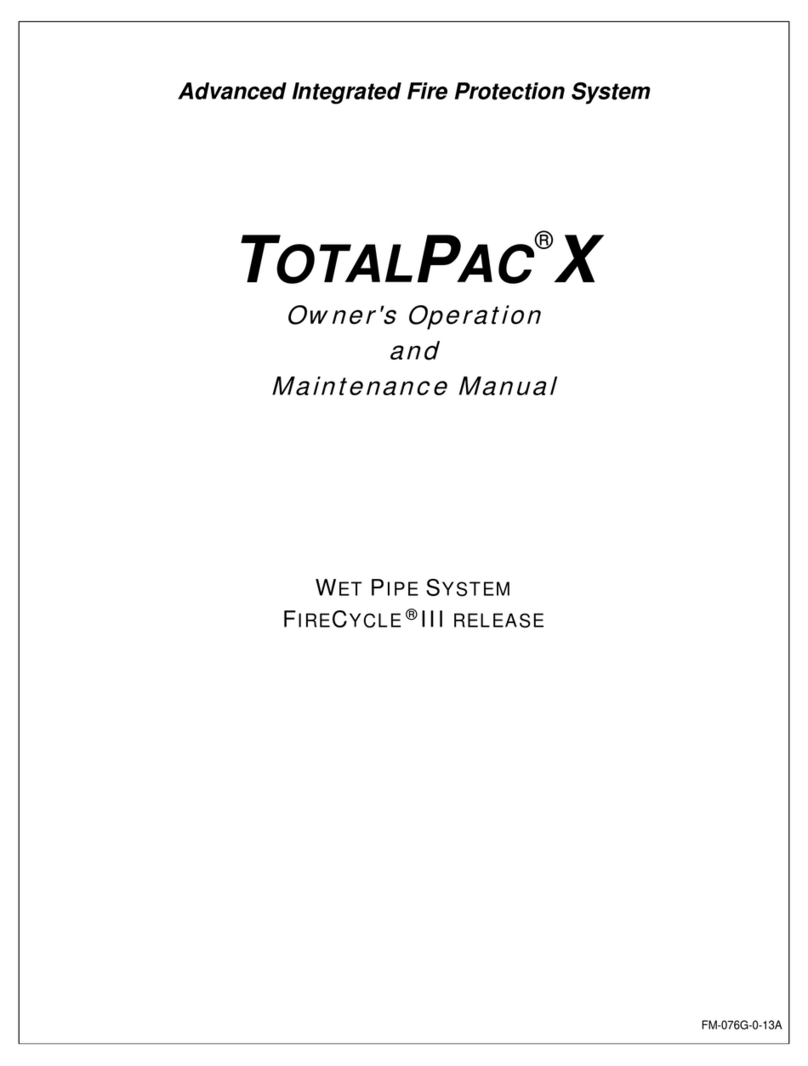
FireFlex
FireFlex TOTALPAC X Installation guide

FireFlex
FireFlex TOTALPAC X Installation guide

FireFlex
FireFlex TOTALPAC X Installation guide
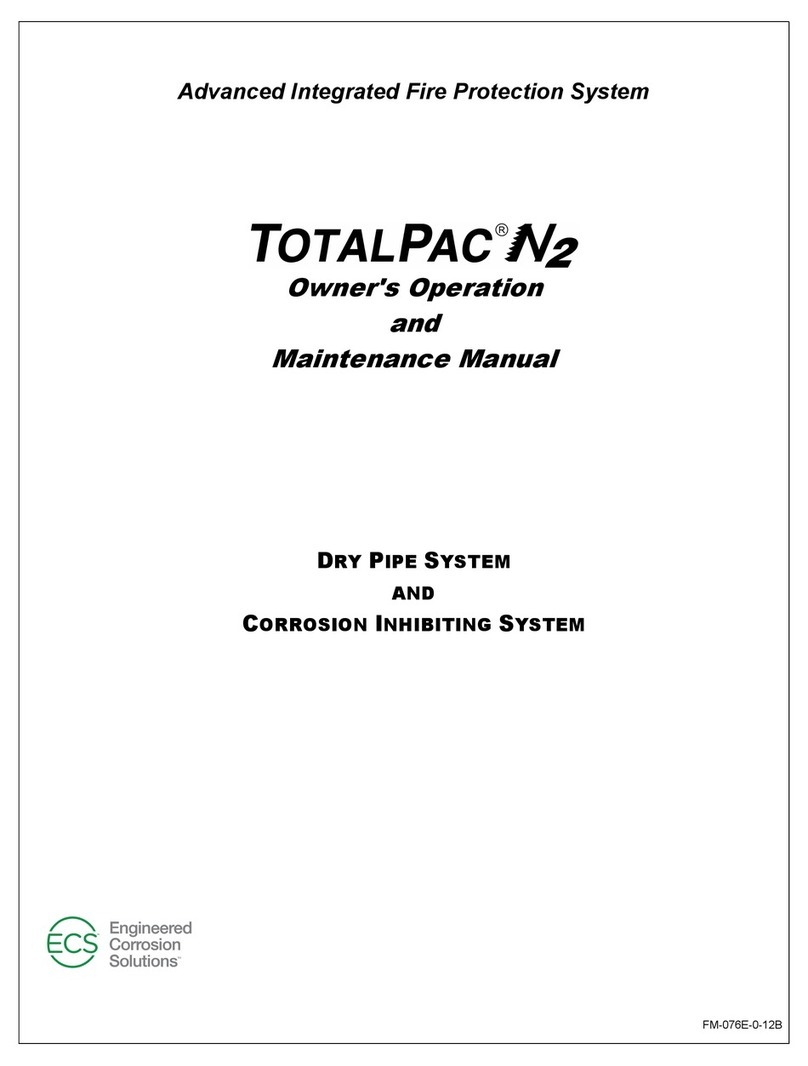
FireFlex
FireFlex TOTALPAC N2 Installation guide
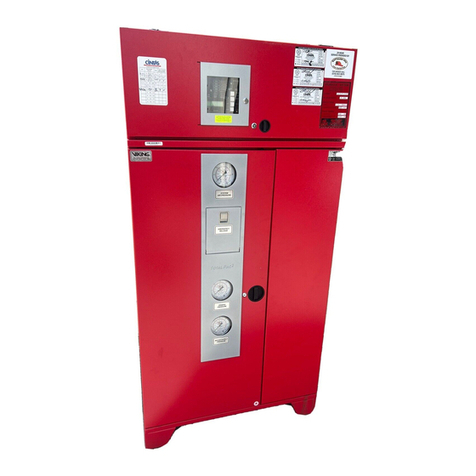
FireFlex
FireFlex TOTALPAC2 User manual

FireFlex
FireFlex TOTALPAC2 Manual

FireFlex
FireFlex TOTALPAC2 User manual

FireFlex
FireFlex TOTALPAC X Installation guide
